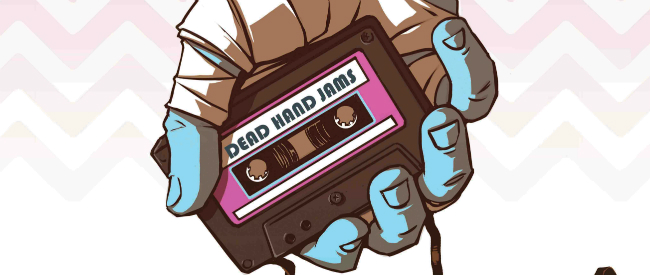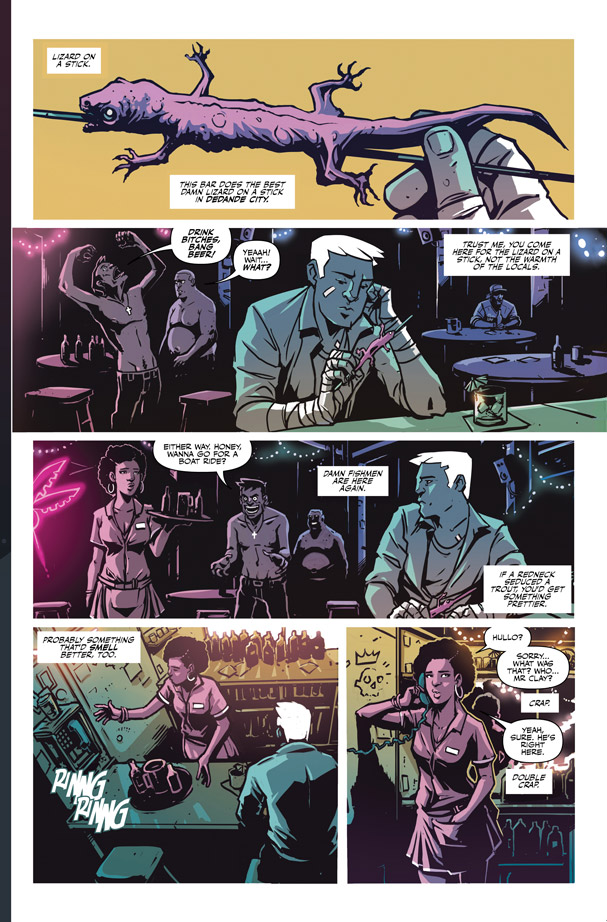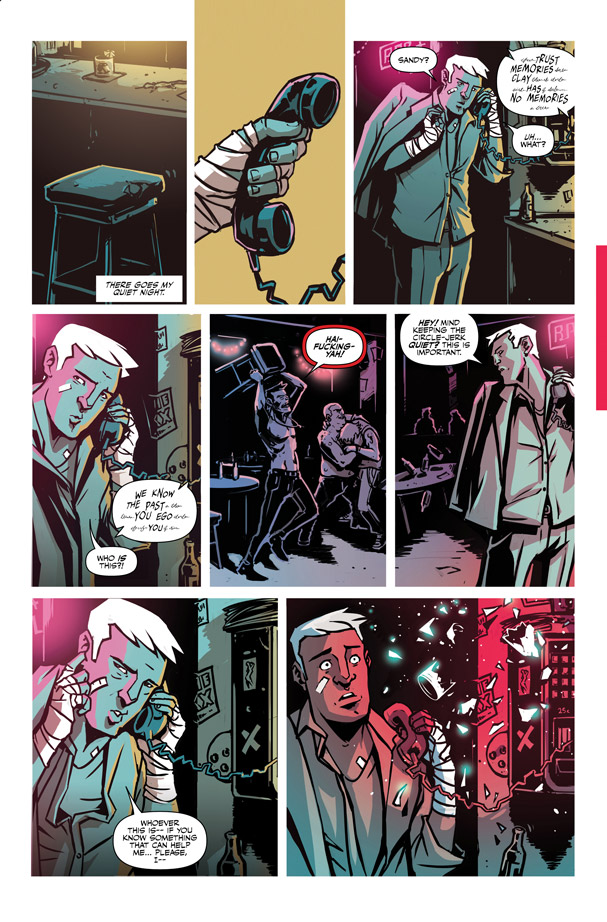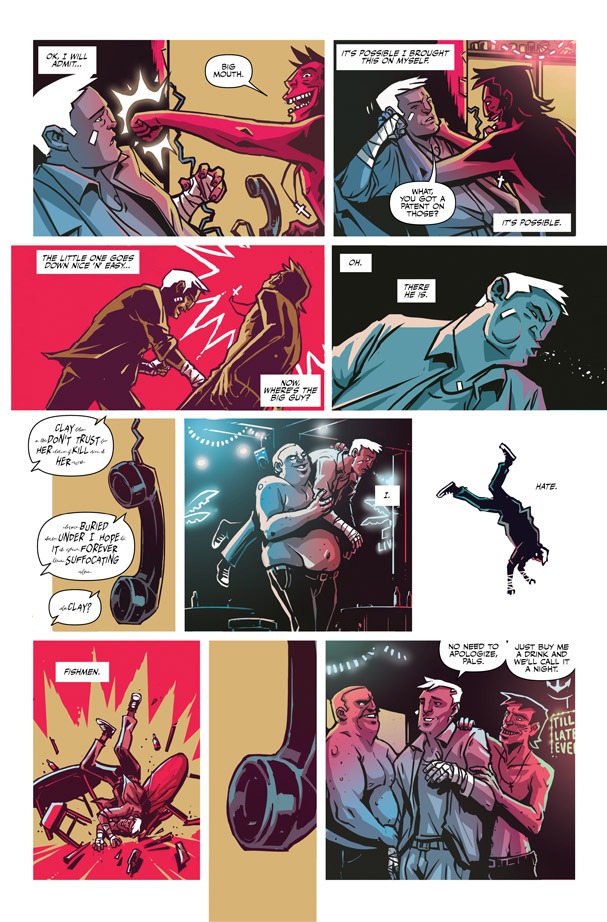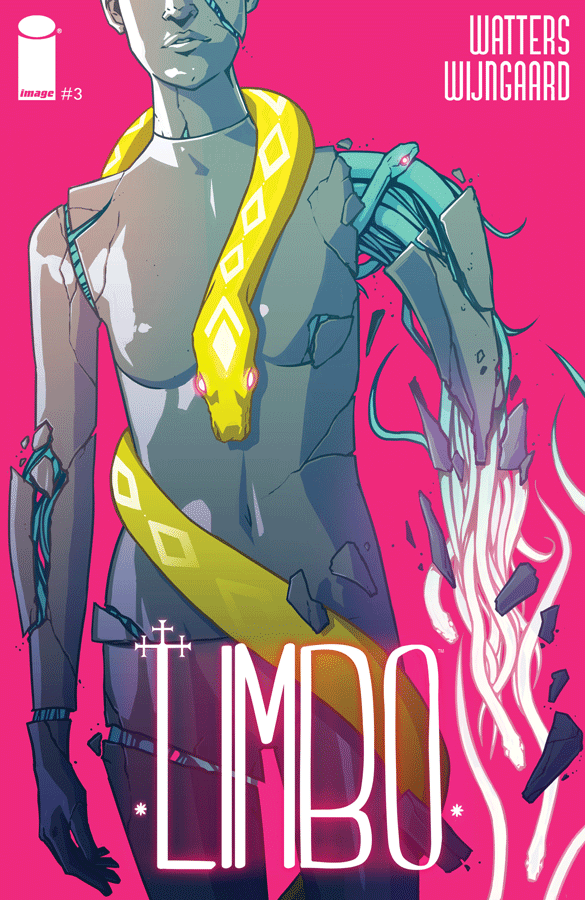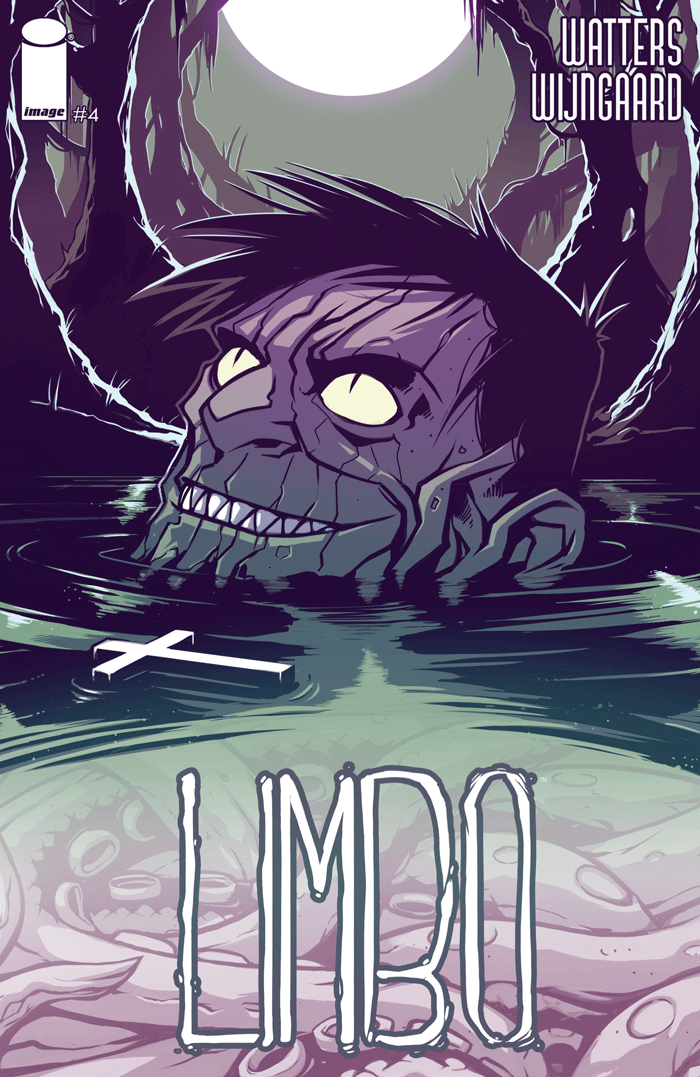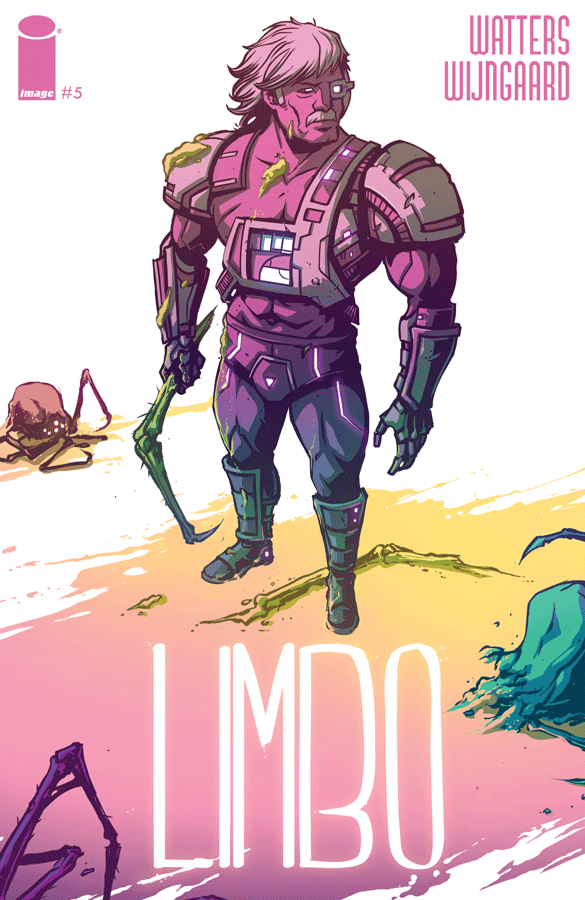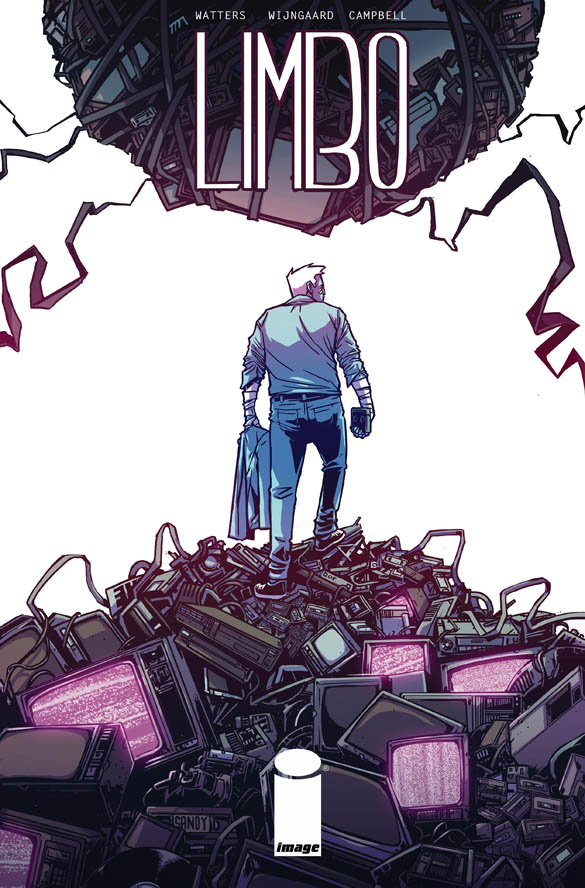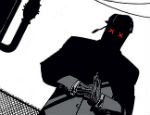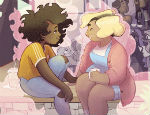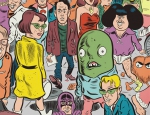What would happen if William Burroughs, Raymond Chandler, Terry Gilliam, and David Lynch all got together, dropped some acid, went to Mardi Gras, and made a comic book?
I have no idea. However, I imagine such an illustrious meeting-of-the-minds would result in something like Limbo, the Image Comics series by creators Dan Watters and Caspar Wijngaard.
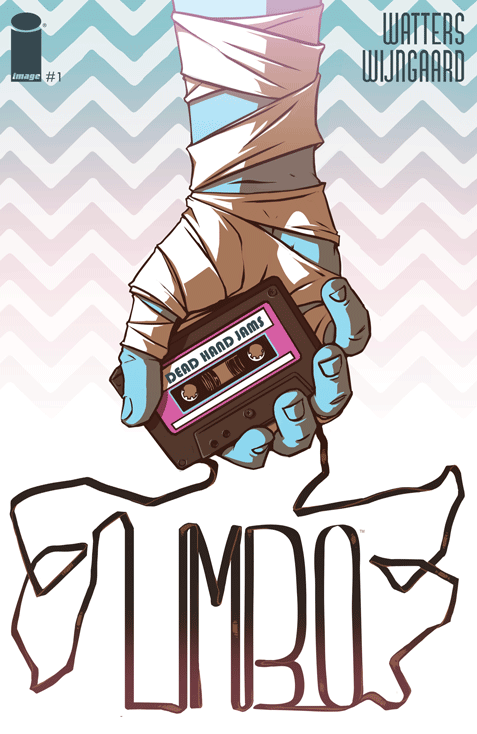 The sixth and final issue of what was initially intended to be a multi-volume series arrived this week, with the trade paperback scheduled for release in early June. The unexpectedly premature conclusion comes as a real shock – this totally unique series certainly showed a LOT of promise. (In fact, I’ve half a mind to gather up a torches-and-pitchforks mob to storm the gates of Image Comics HQ and demand some reconsideration!)
The sixth and final issue of what was initially intended to be a multi-volume series arrived this week, with the trade paperback scheduled for release in early June. The unexpectedly premature conclusion comes as a real shock – this totally unique series certainly showed a LOT of promise. (In fact, I’ve half a mind to gather up a torches-and-pitchforks mob to storm the gates of Image Comics HQ and demand some reconsideration!)
Wijngaard’s cover art for issue #1 immediately piqued my interest: a strange bandage-wrapped hand clutches a cassette tape (an ancient device used by us pre-internet Cro-mags to record and re-play music) unspooling into the word “Limbo”, all overlaid in an unusual color palette of electric Easter candy pastels. As a child of the 80s and 90s, I knew I had to find out what was inside. The book looked weird. And I really like weird.
I’ll admit to some head-scratching at first, but the series doesn’t take long to demonstrate its irresistibility. The story opens on protagonist Clay, an amnesiac private detective in the New Orleans-esque city of Dedande. He’s enjoying a snack of lizard-on-a-stick in a local dive bar when he gets a spooky phone call that sets the story in motion.
From there the reader tumbles headlong like Lewis Carroll’s Alice into a noir-ish tale involving a musical-Voodoo-wielding sidekick, a mysterious chanteuse, a drug kingpin who moonlights as a Luchador (or vice versa), flesh-eating “Fishmen”, and a supernatural entity called the Teleshaman who inhabits the physics-defying universe inside our TV sets. Oh, and did I mention the jazz band whose songs cause listeners to vomit snakes? There’s that too.
Beneath Wijngaard’s delightfully lysergic surface, though, Watters uses Limbo to explore some highly interesting philosophical themes. The nature of reality is certainly a major motif, and Clay’s quest to unravel his forgotten past leads to some really outré ideas about the substance of identity. (Think David Lynch’s Lost Highway…) Add to this the religiosity of a husband-and- wife duo of Voodoo trickster deities, and you’ve got yourself one heckuva mind-trip!
How do they come up with this stuff..? “Influence comes from a hell of a lot of places,” says Watters in a brief interview we conducted via email. “Caspar and I have really quite different influences, so we can both come at a single idea from quite different directions.
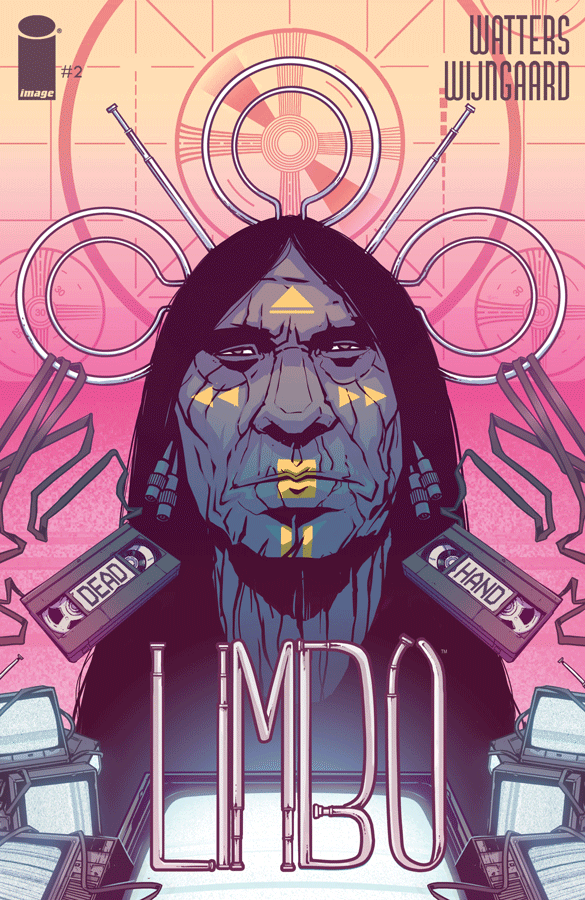 “Major ideas can also spring from minor ones, such as the Teleshaman, who grew from [an early] concept of reading futures in television static into one of the defining features of the book. The idea of channel hopping somewhat defines how we treat levels of reality in the world of Limbo. [This] led to me reading a load of Douglas Hofstadter’s work on consciousness and strange loops… and probably to totally misappropriate it, haha!”
“Major ideas can also spring from minor ones, such as the Teleshaman, who grew from [an early] concept of reading futures in television static into one of the defining features of the book. The idea of channel hopping somewhat defines how we treat levels of reality in the world of Limbo. [This] led to me reading a load of Douglas Hofstadter’s work on consciousness and strange loops… and probably to totally misappropriate it, haha!”
Watters and Wijngaard previously worked together on a much darker project – last year’s Tortured Life, a short-run supernatural horror series for T Pub Comics. But Limbo, while definitely dark, has an undeniably appealing quality of fun to it.
“Limbo was always intended to be fun; that was the most important idea for us going into it. It was supposed to be about breaking away from the more filmic trend that seems to be sweeping through comics.
“I think a lot of the humor comes from Clay being a total mess of a person, which makes him a lot of fun to write. I think this throws back to Samuel Beckett’s old adage of “Nothing is funnier than unhappiness”. There’s a strong existentialist theme running through the book, and without humor it could have ended up really quite miserable.”
Limbo is also liberally peppered with 1980s pop culture kitsch, as if Wijngaard went to a John Hughes garage sale for inspiration. He deftly enhances the nostalgic vibe of the series with mix-tapes, Walkmans, vinyl LPs, garish TV talk shows, VCRs and a kooky action figure, while Watters brilliantly employs these totems to help propel the story. As an added bonus, each issue includes a mock 80s-style advertisement for the series that’ll undoubtedly put a smile on the face of any reader who was born before the Reagan administration.
Watters explains, “Yeah, it’s definitely a love letter to 80s pop culture – Caspar is a true child of the 80s, so he can take the blame for a lot of it! I was actually born in ’91, so I wasn’t around for most of that stuff. For me it’s more like exploring some sort of alien territory – you can see the threads leading from this bizarre, big-haired-and-shoulder-padded culture to the dayglo-yellow-spandex’d Sunny-D-guzzling pop culture of my own youth.
“[Having been] raised on the films of the decade, Caspar and I both always knew that [the movies of] John Carpenter, David Cronenberg and Brian Yuzna were all going to shape the book in their own ways.
“Limbo was also an attempt to recapture some of the anarchy of the era of comics that began in the late 80s, all the amazing stuff in Revolver and 2000AD, the birth of Vertigo and so on – that period of really raw creativity when there was a real injection of inventiveness and mayhem into mainstream comic books. Those have always been my favorite comics, and really the reason I wanted to start working in the medium.”
In contrast to the Trinidadian dance that shares its name with the series, Watters and Wijngaard have raised the bar for comics with Limbo. It’s truly a one-of-a-kind adventure, and I’m quite sad to see it go.
“We’ve had an absolute blast creating this book,” consoles Watters, “and I can’t imagine being much happier with where we’re ending it.” That’ll have to do for now, at least until these two amazing creators once again emerge from their current states of limbo to take us on the next mind-expanding journey.
The trade paperback of Limbo will be published by Image Comics on June 1, priced $14.99





